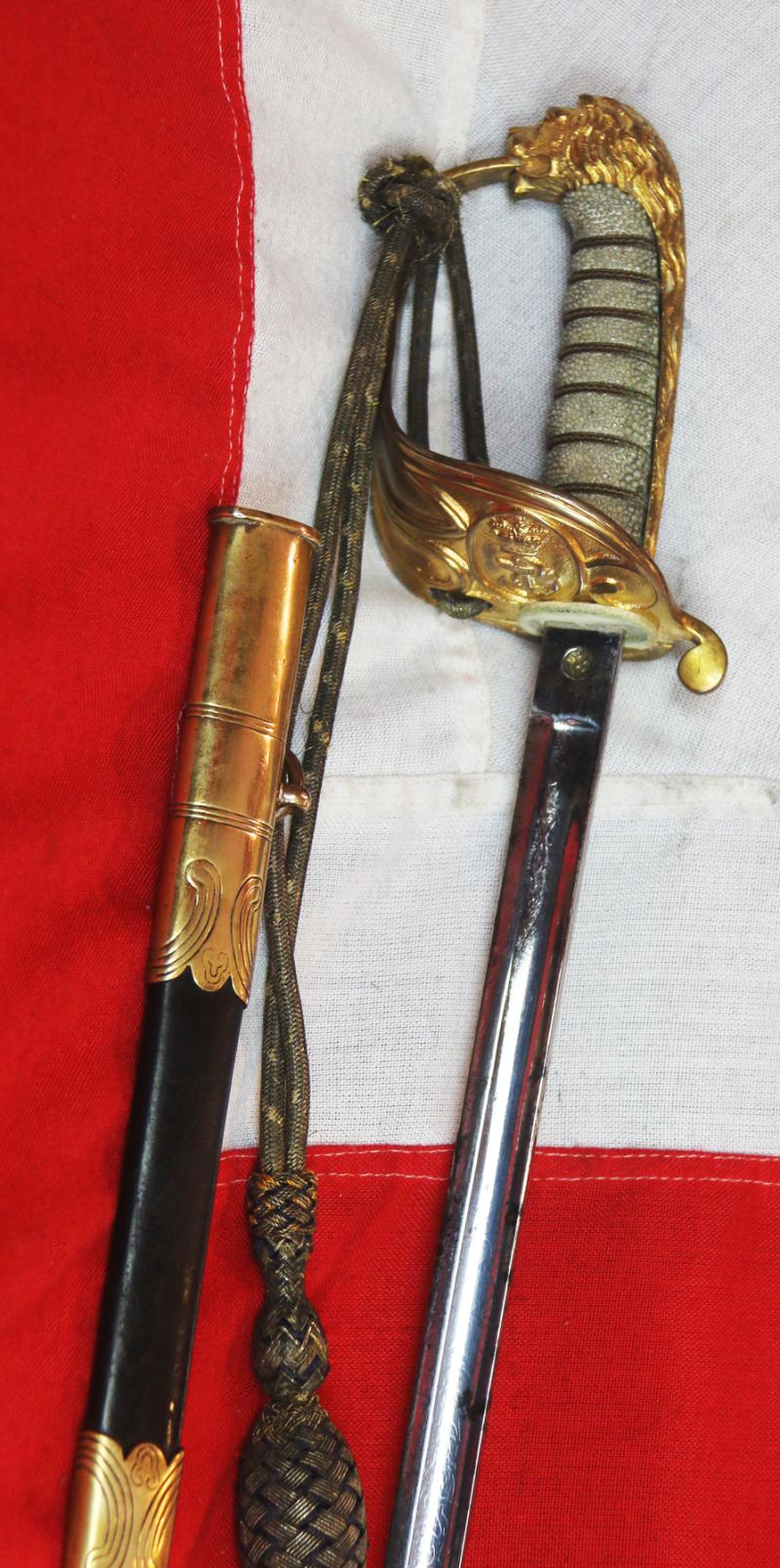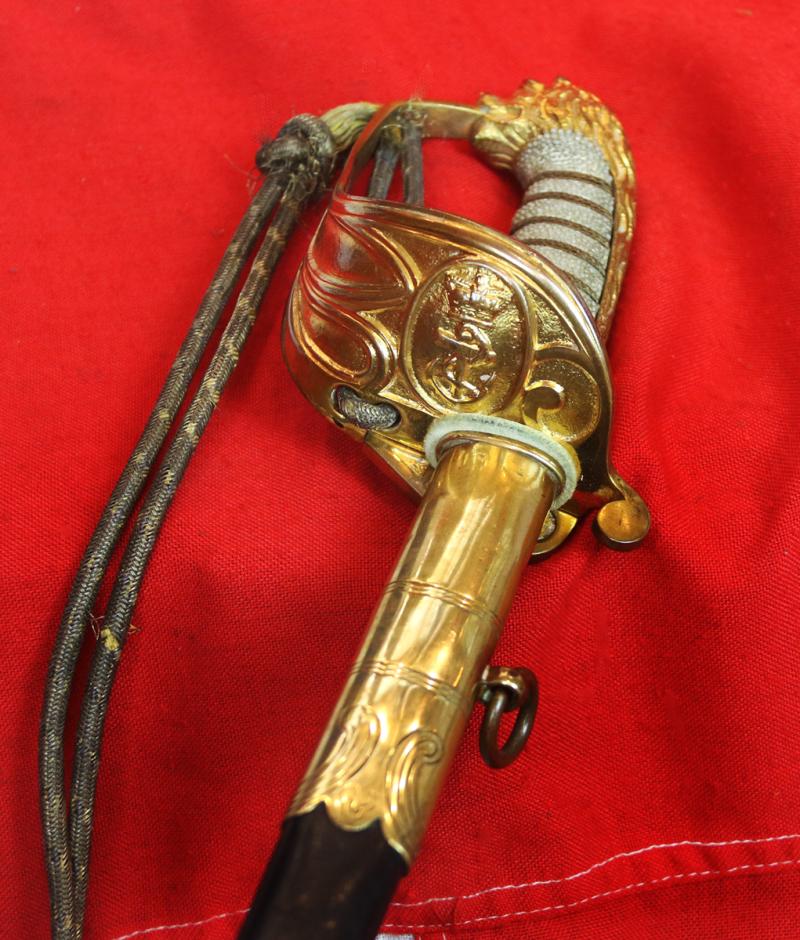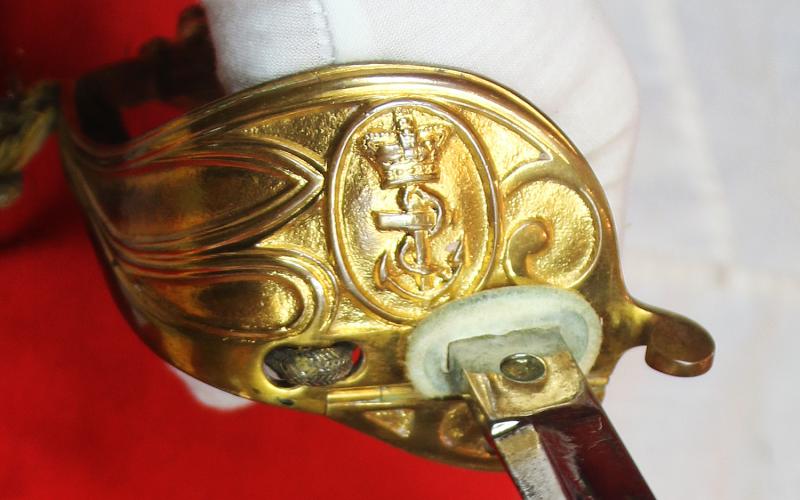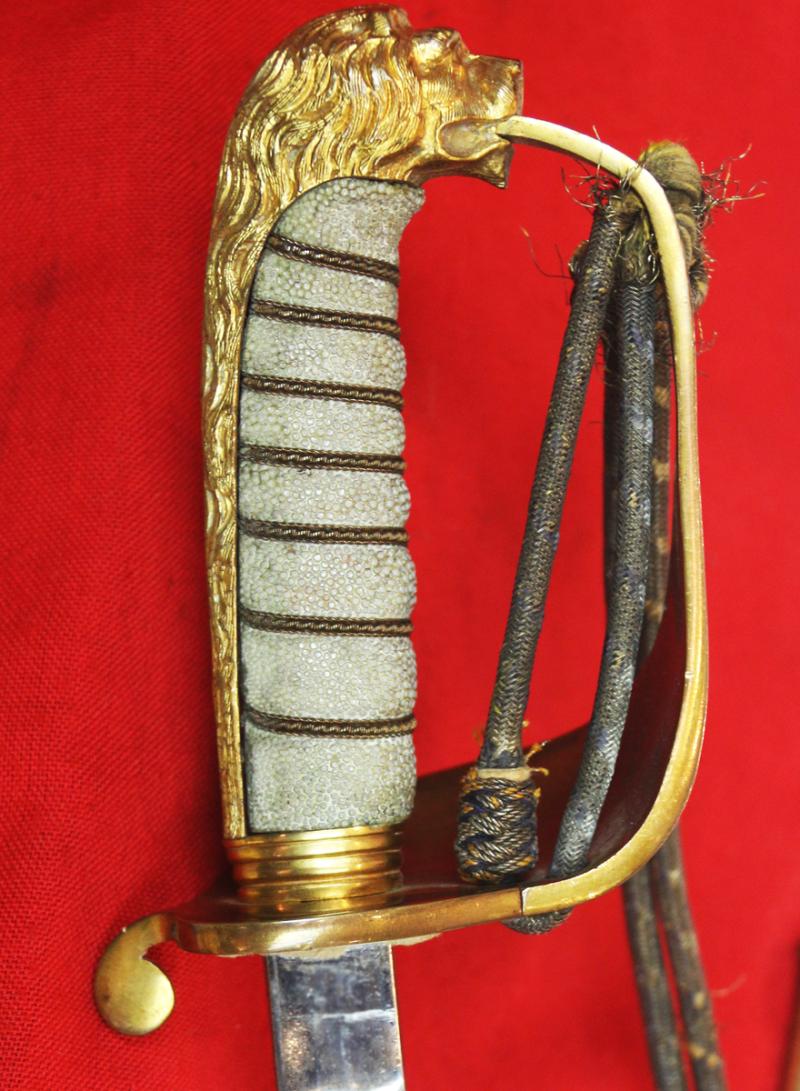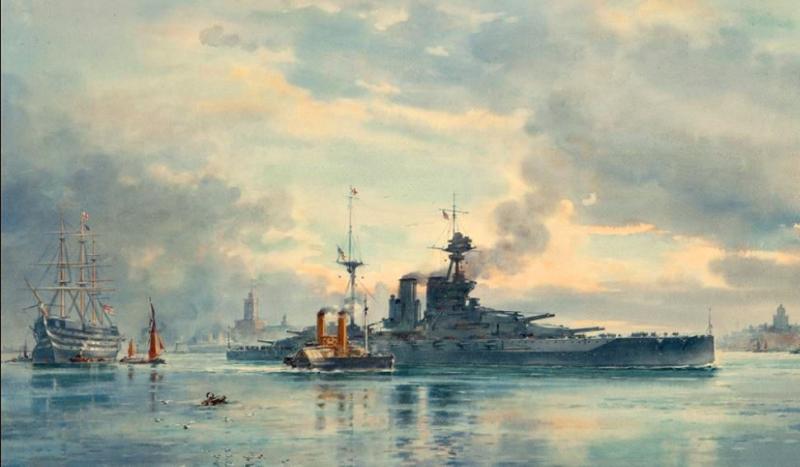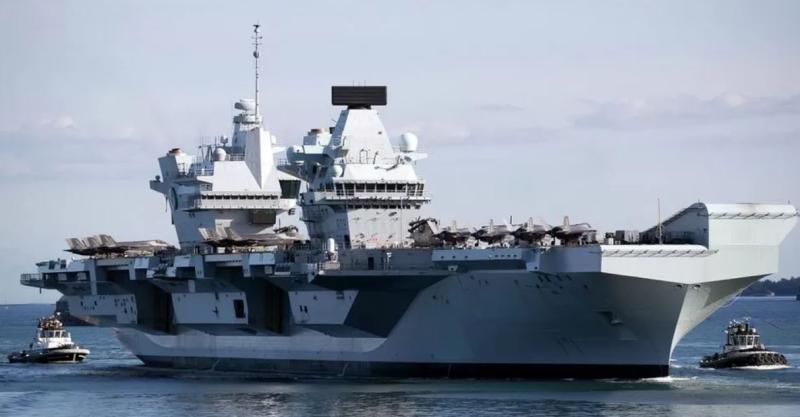A Stunning, Historical, Victorian, Royal Naval Officers Sword, Near Mint Condition, Thus Still Perfect For Current Service. Used, Originally, From the Days of The Ironclads & Dreadnoughts
Complete with gold bullion tassel, near mint gilt to all mounts, brightly polished blade with traditional fouled anchor and scroll etching. Proofed at the forte on the blade, and excellent leather to the scabbard.
A superb light grade sword, officially the 1827-46 pattern, that, although it is over 130 years old, is absolutely perfect for current use today due to its fabulous condition. Only the knot shows its age, which has darkened over the decades and a little thready.
Due to constant, around 100 years of polishing, the full etching on the blade is now somewhat more feint than it once was, but still beautifully bright.
Considering when this fine sword was originally commissioned from the sword-smith in around the 1880's, and it may once have been used by an officer aboard, such as, the 1880's HMS Howe, the Admiral Class Ironclad Battleship {10,500 tons}, and later, the old HMS Queen Elizabeth the WW1 Super-Dreadnought Class battleship {33,000 tons}, it is still ideal for use today, on such as the new, 2021, Royal Navy's Flagship, the Aircraft Carrier HMS Queen Elizabeth { 63,000 tons}
The year 1827 ushered in an updated design for the officers’ sabre. Based on the British Army’s 1822 Pattern Sabre, the new sword had a gilt-brass hilt of ‘Gothic’ flair forming a half-basket and presenting an oval cartouche containing a fouled anchor and crown. The blade was of the pipe-back type, ending in a quill point and sometimes incorporating a large, flared cutting edge to the rear of the blade’s final third or quarter. The grip was covered in large-nodule white shagreen: dark shagreen still denoting warrant officers’ ownership.
Whether the knuckle-bow entered the lion’s-head pommel through the mouth or under the chin seems to have been a manufacturer’s preference though debate continues regarding this point and some collectors insist the under-chin variant only came along after 1901. The short lion’s mane of the 1805 Pattern’s back-strap seems to have been eschewed by having a longer one in this period. A single slot in the knuckle-bow (near to the pommel) was provided for the sword knot to be tied to and then, from around 1830, a ring for it was often attached to the handle’s ferrule. The two holes in the guard were introduced in the late 1830s and are now familiar staples of the model. The black leather scabbard had three gilt-brass mounts: a locket, middle and a chape. The two suspension rings were attached to the first two sections.
This pattern was changed in 1846, and was identical to the 1827 Pattern Sabre described above except for the fullered ‘Wilkinson’-type blade that replaced the pipe-backed design. Debates had sprung up regarding the martial merits of the pipe-back blade-forms and, in 1845, the Army had chosen to adopt a single-fullered type put forward by the famous English sword cutler Henry Wilkinson of Pall Mall. The Navy obviously deemed the new blade preferential and chose to take it on, too.
Every single item from The Lanes Armoury is accompanied by our unique Certificate of Authenticity. Part of our continued dedication to maintain the standards forged by us over the past 100 years of our family’s trading, as Britain’s oldest established, and favourite, armoury and gallery
Code: 25027

